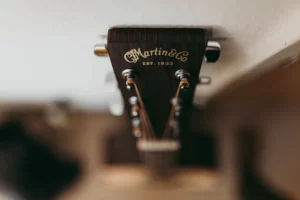Introduction
When a guitarist starts looking for their first instrument, one significant point of confusion arises when trying to choose between the classical or acoustic guitar. Both instruments look kind-of-the same and surely you can play them in such a way that will get any song out there – but which is better? Let’s drill down to know more about Classical vs Acoustic Guitar.
The differences lie with what type/style each offers: The Classical Guitar has nylon strings (which means it’s an acoustic) whereas Acoustic Guitars use steel ones. So if this matters at all then now should be considered. Newbies often start out with acoustic guitars because they are the most common type new musicians play. But is this really your best bet? We’ll explore what makes an acoustic steel string guitar better or worse for different types of music, as well as how you can tell them apart from each other.
Before we get started I want to make two important points:
- The descriptions regarding the uses for each of these instruments are going to be very general here. You can do whatever the heck you want, with any kind of guitar and over time musicians certainly have!
- “If I were starting my career as a guitarist,” says local musician and teacher Tom Politzer “the first decision that would need making is which type or styles best suit me: rockabilly? classical?” We all have our own preferences when picking up these different plated instruments but there really isn’t just one answer because each genre has its own distinct needs.” With time those musically relevant choices become clearer.
Let’s get down to it and start sorting out this classical vs acoustic guitar question.
Basic Differences Between Classical and Acoustic
You know what they say, “iffy-classical guitars.” The two types of instruments indeed share many similarities. From their shape to woods and even how they look (although not literally), it might be hard for someone who doesn’t play guitar or understand music theory to recognize a classical style instrument when you spot one on your local street corner without being told which type of music these belong in!
Best part? These days many modern features are found only on acoustic guitars while more traditional designs can still take advantage of some great old tricks like hideaway strings so players don’t stick out their fingers if need be during performances—which we all know happens! Both the classical and acoustic guitars are incredibly versatile instruments that can be played solo or as part of a larger ensemble.
Some of the differences are:
1) Strings
Nylon strings are more mellow than steel and easier on your fingers. If you play the guitar it’s worth checking out what type of string is used to find a sound that works for you!
2) Body Size
The guitar is a versatile instrument with the capability to create an endless variety of musical genres. Classical guitars have smaller bodies compared to their more popular sizes, but some acoustic models share similar dimensions as well!
3) Fingerboard
Classical instruments have a more forgiving tone than other types of guitar, making them great for beginners. They also come with an option to get smaller hands if needed!
4) Headstock
Though we take machine tuning pegs for granted, they’re still used on some classic instruments. Nylon strings make this option more viable than you might think – and even though steel-string guitars usually have headstock slotting technology from their parlor days (as opposed to classical models), it’s nice when these old-fashioned designs can be refreshed for modern players who want an authentic sound without having anything else changed about them!
5) Bracing
Steel-stringed acoustics are not just for the pros. They provide a more resonant sound that can be enjoyed by anyone, from beginner to pro. I’m going out on a limb here but I think it has something to do with how strings keep tension when struck which makes these guitars sturdy – what comes out sounds like perfection! Classical instruments feature lighter bracing since they don’t need as much strength or stiffness because of their lightness (specifical violin).
6) Truss Rod
As the tension on steel strings is much higher than that of nylon, a classical guitarist must use an adjustable truss rod to counteract this. Otherwise, they will experience too much stress and be able to damage their instrument with its tuning unstable or even worse: snap!
7) Neck-to-body Joint
Because of the importance that string players place on having a well-made instrument, many guitar makers incorporate an extra joint at the 12th fret. This design was traditionally used for acoustic guitars but it’s now becoming more popular in steel strings as well because people want their instruments to last longer and this will help them maintain their shape over time by preventing unnecessary wear from occurring near where your hands grip onto each side when playing live gigs with other musicians!
Classical vs Acoustic Guitar: Which Is Better for Beginners?
Learning guitar is tough, but starting out with a guitar that will set you up for success from day one seems important. I’m sure many beginners quit because they feel like their academic work and musical skills aren’t enough to learn how this instrument works – when really all we need are some more practice hours!

I think most people go into learning music theory or just the basics before giving up on themselves; maybe even thinking “maybe later?” But if there was ever an opportunity now’s the time: give yourself permission (and gear) so by focusing solely on technique it becomes easier over time.
That said, nylon strings offer a more comfortable playing experience for some musicians. In particular, those who have just started out and are still developing their fingers or children with small hands may find them easier to play than steel-string guitars due to the softness of these types of instruments but this should not be the only factor in deciding what kind you want!
Steel-string guitars are the perfect instrument for anyone who wants to play their favorite songs and maybe even write a few new ones! These acoustics lend themselves very prominently in country, rock (like John), or folk music.
For those who want to strum with their fingers, not pick up the guitar. The sound is mellow and it’s not as loud so you can play them in smaller spaces without bothering anyone else around you- especially if they’re playing an electric one! Classical musicians may use this kind of instrument but some jazz artists will too because these guitars have been found throughout many genres including folk-rock etc.
Classical vs Acoustic Guitar – Recommended Guitars
Here are a couple of suggestions for beginners. These guitars have great reputations as starter instruments, and in my opinion they’ll serve you well! However, think about this advice only as a jumping-off point to do your own research – there are plenty of other good guitars out there that may be better suited towards what YOU want instead (maybe something else).
Yamaha FG800 Acoustic Guitar
There are many guitars for beginners. I recommend the Yamaha FG800. It is a good beginner guitar, easy to play, sounds good, and has a strong reputation. If you want a steel-stringed guitar with a smaller body, take the FS800. You can’t go wrong with either one! But if I had to choose between Dreadnoughts and Concert-style guitars for smaller people like me.

Newly innovated body style offers much better volume projection while still being easy on your hands compared to other styles of acoustic instruments such as grand pianos or parlor organs which may be too large when played by someone under 5′ tall.
Cordoba C3M Classical Guitar
Nylon-stringed guitars are very good beginner guitars. I recommend Cordoba ones. They use Canadian cedar, mahogany, and nato wood. They have a bone nut and a 2-way adjustable truss rod. These guitars are good value for the money and they only make nylon-stringed instruments.

The Iberia series from Cordoba is a great place for those who are interested in nylon string guitars. These instruments have been seriously crafted to provide you with an affordable, high-quality experience no matter your skill level or budget! The C3M model will be perfect if we’re talking about beginners because it’s lightweight and sounds wonderful while still being tough enough that even experienced players can handle them easily on stage; but if they want something more advanced than what this line offers there’re always other options available like sometimes spruce tops which add depth & dimension when blended together perfectly (sp IV).
Classical vs Acoustic Guitar – Choose Your Guitar
As you do a little research, it will be clear that there are acoustic-electric guitars with nylon strings and small bodied steel stringed guitars. The top companies come up with some pretty innovative ideas for every kind of player under the sun!
That said, here is a quick review of this article.
Classical guitars
- Softer sound
- Smaller bodies
- Easier on the fingers
Acoustic guitars
- Louder, larger sound
- Better for a wider range of musical styles
- Better for strumming
If you are looking to primarily play classical guitar, then a nylon-string might be the best option for your fingers. But if steel strings sound more appealing and want a louder tone output from it than what acoustic models provide consider choosing one with either magnetic or electric pickup systems so that way strumming patterns can still occur while using pick scrapers on fretboards at will too!
Conclusion
It’s been fun taking a look at the world of guitars and seeing what you can learn about them. Hopefully, this article has given you some insight into the differences between acoustic and classical guitars. If not, we hope it gives you enough information to make an informed decision on which type of instrument is right for your needs. Remember that there are plenty more choices out there; don’t let this be your only foray into guitar-buying. You may find another one in the future that better matches who you are as both an artist and person–so try not to fret too much over it!
Good luck on picking out your first stringed musical companion!







